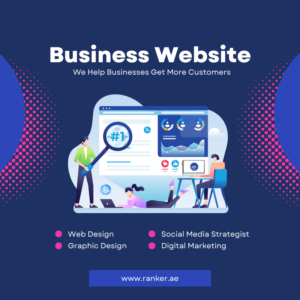Introduction
In today’s digital world, having a website isn’t enough. Your website must not only attract visitors but also guide them toward meaningful actions—whether it’s making a purchase, signing up for a newsletter, or contacting your business. In this article, we’ll explore how to create user-friendly web designs that not only engage users but also convert them into loyal customers.
Why User-Friendly Web Design Matters
User-friendly web design is critical because it serves as the bridge between your business and its audience. An intuitive, visually appealing, and easy-to-navigate website ensures that users have a positive experience, which directly impacts conversion rates. Studies show that 94% of first impressions of a website are design-related, and 88% of users won’t return to a site after a poor experience.
Key Elements of User-Friendly Web Design
Here are the most important aspects of creating a website that works for your audience and meets your business goals:
- Intuitive Navigation: Simple menus and logical pathways ensure users can find what they’re looking for quickly.
- Fast Loading Speeds: Pages that load within 2-3 seconds prevent visitors from leaving prematurely.
- Mobile Responsiveness: Mobile-friendly websites cater to users on all devices.
- Clear Call-to-Actions (CTAs): Highlight actions you want visitors to take.
- Visually Appealing Layouts: A clean design captures attention and communicates professionalism.
Designing Websites That Convert
Here’s how you can create a high-performing, user-friendly website:
Understand Your Audience
Start by identifying your target audience. What are their needs, preferences, and pain points? Use tools like Google Analytics or surveys to gather insights into user behavior. This data will guide your design choices.
Prioritize Simplicity
A clutter-free design makes it easier for users to focus on your content. Stick to minimalistic layouts, clear fonts, and plenty of white space. Avoid overwhelming users with excessive information or visuals.
Optimize for Mobile
With over 60% of web traffic coming from mobile devices, responsive design is non-negotiable. Ensure your site looks and functions seamlessly on smartphones and tablets by:
- Using flexible grids and layouts.
- Testing navigation menus for touch-friendliness.
- Optimizing images and videos for mobile screens.
Create Engaging Content
Engaging content keeps users interested and encourages them to explore further. Write compelling headlines, include high-quality visuals, and ensure all content adds value to the user experience.
Implement Strong Call-to-Actions
Your CTAs should stand out and motivate users to act. Use actionable language, such as “Get Started,” “Learn More,” or “Sign Up Now.” Place CTAs strategically, such as at the top of the page, within the content, and at the end of pages.
Best Practices for Enhancing Conversion Rates
To turn visitors into customers, focus on the following strategies:
- A/B Testing: Experiment with different layouts, CTAs, and color schemes to see what works best.
- Customer Testimonials: Showcase reviews and success stories to build trust.
- Trust Signals: Include security badges, certifications, and guarantees.
- User Journey Mapping: Guide users toward conversion through logical steps.
- Fast Checkout Process: If applicable, simplify the buying process by minimizing steps.
Steps to Build a User-Friendly Website
- Define Your Goals: Determine the primary purpose of your site (e.g., sales, lead generation).
- Choose the Right Platform: Select a CMS like WordPress or Shopify based on your needs.
- Design with Your Audience in Mind: Focus on functionality and user preferences.
- Optimize Speed and Performance: Use tools like GTmetrix to improve load times.
- Test and Improve: Regularly analyze and enhance your design based on user feedback.
Benefits of Partnering with Experts
Collaborating with professionals, like a Web design company in Dubai, can ensure your website meets the highest standards of usability and performance. Experts bring technical expertise, creativity, and a deep understanding of user psychology, enabling you to achieve better results.
Designing a user-friendly website is both an art and a science. By understanding your audience, prioritizing simplicity, and following best practices, you can create a website that attracts and converts visitors effectively. For businesses looking to take their web presence to the next level, partnering with a Web design company in Dubai or Digital Ranker Dubai ensures professional results and long-term success. Start optimizing your website today and turn visitors into loyal customers!
FAQs About User-Friendly Web Design
1. What makes a web design user-friendly?
A user-friendly web design is simple, visually appealing, and easy to navigate. It provides relevant information quickly and works seamlessly on all devices.
2. How can I improve my website’s loading speed?
You can improve loading speed by optimizing images, using caching tools, and minimizing CSS/JavaScript files.
3. Do I need a professional web designer?
While DIY options exist, hiring professionals like Digital Ranker Dubai can help you create a polished, high-performing website tailored to your business needs.
4. Why is mobile responsiveness important?
Mobile responsiveness ensures your website provides a great user experience on all devices, helping retain mobile visitors and improving SEO rankings.






